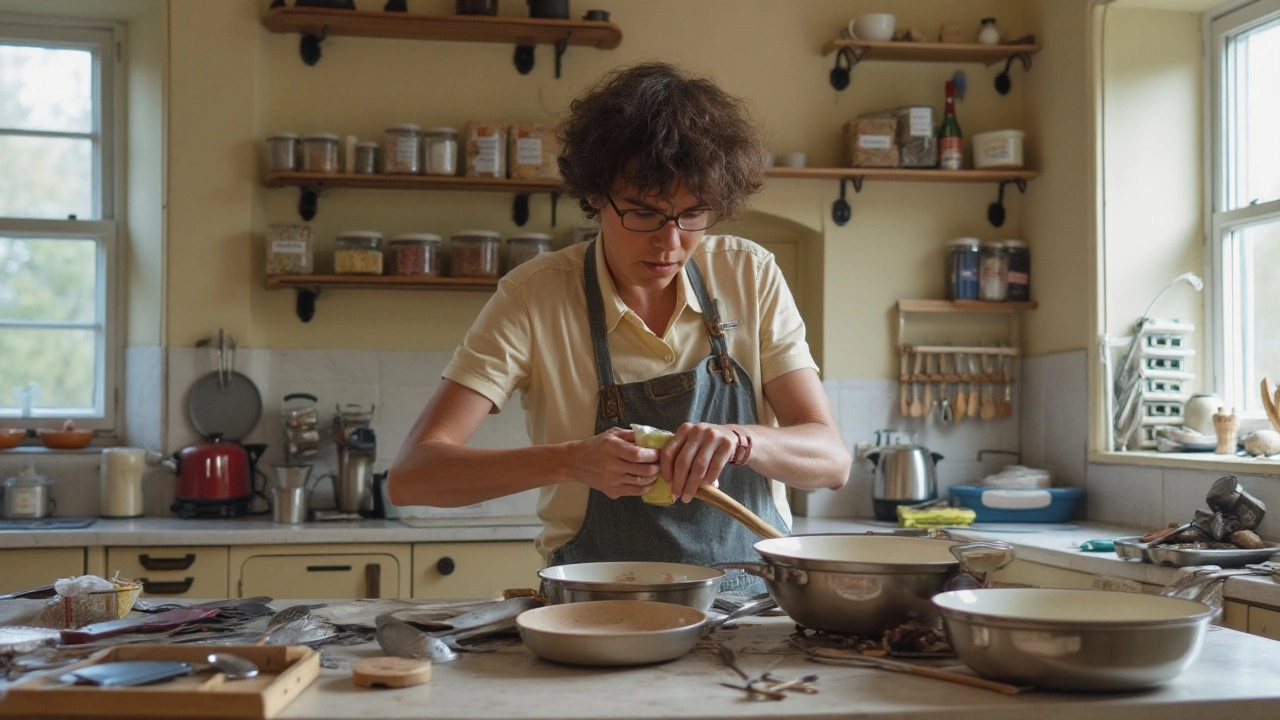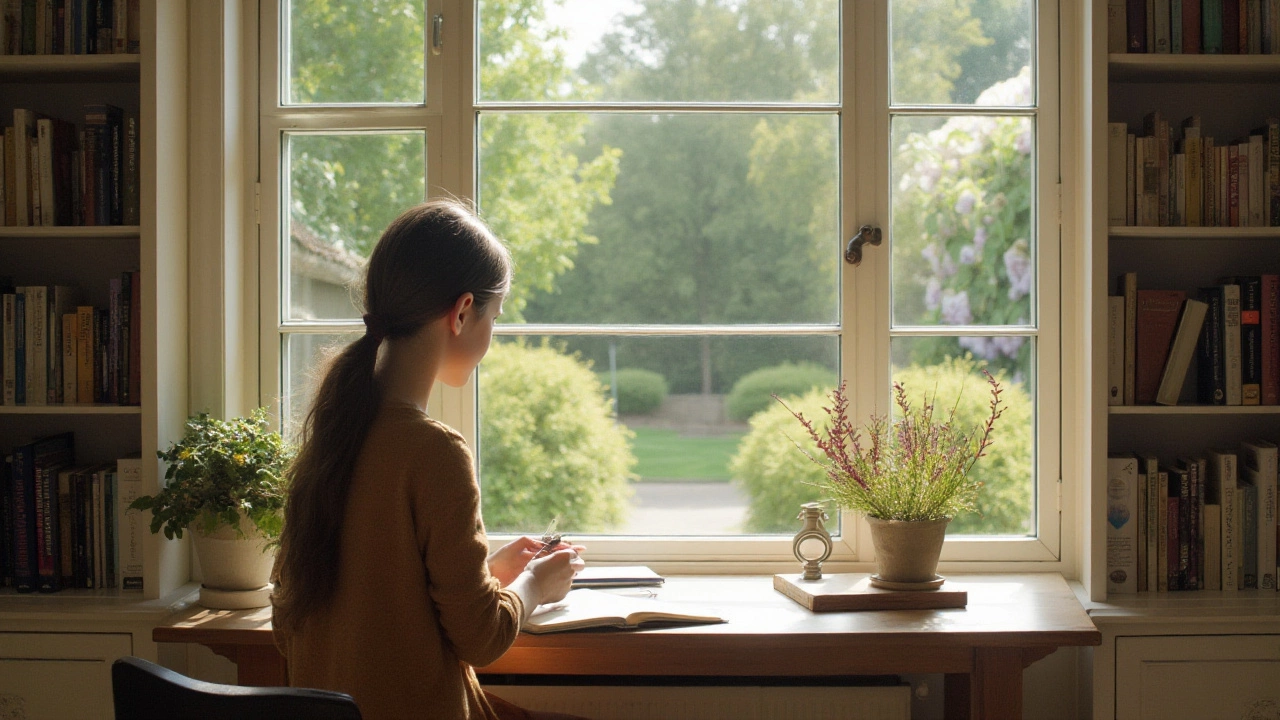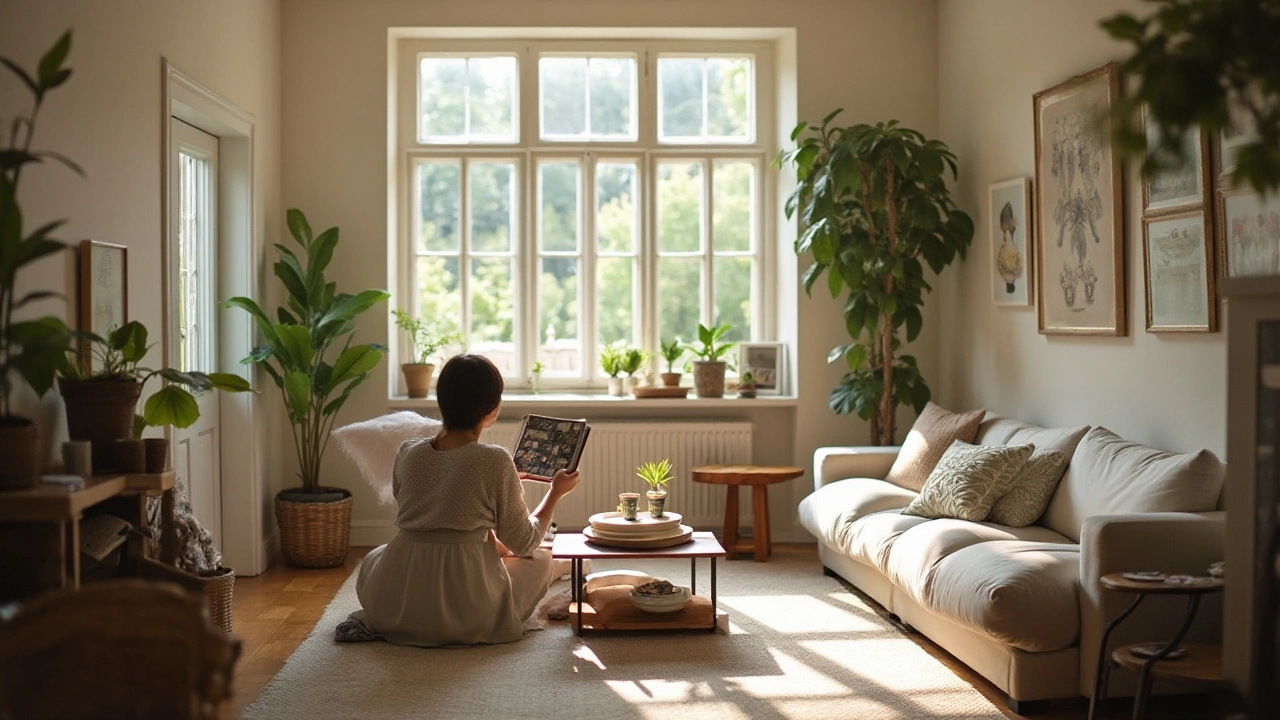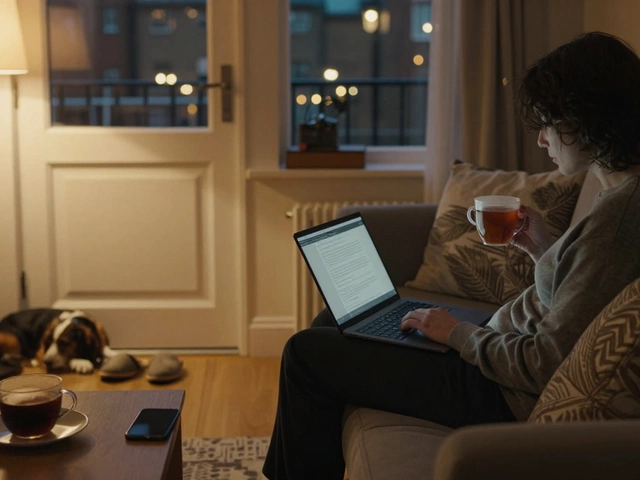Many of us find ourselves surrounded by things we've held onto for too long, unsure of how to tackle the mess accumulating around us. Among the various strategies available, the 6-month rule stands out as a simple yet effective way to reduce clutter and bring order to chaos.
This rule guides you in determining whether an item is a keeper or if it's time to set it free. By asking yourself if you have used the item within the past six months (or anticipate needing it in the next six), you create a clear criterion for decision-making. It's not just about making space; it’s about fostering peace and functionality in your environment.
Embracing the 6-month rule doesn't merely reduce clutter—it shifts your mindset toward a more minimalist lifestyle. It's about surrounding yourself with necessities and cherishing simplicity. As we dive deeper into this approach, we'll explore practical ways to implement it across different areas of your home, helping you breathe easier in your own space.
- Understanding the 6-Month Rule
- Benefits of Decluttering with the Rule
- Applying the Rule in Different Areas of Your Home
- Overcoming Emotional Attachments
- Creating a Sustainable Decluttering Routine
Understanding the 6-Month Rule
The 6-month rule is a straightforward guideline that invites us to pause briefly before holding onto items that may not contribute significantly to our daily lives. This rule is anchored on the notion of utility and timeliness, asking the pivotal question: Have I used this item in the last six months, or will I use it in the next six? If the answer is no, the item might simply be lingering out of habit rather than necessity. Minimalists appreciate this rule for its pragmatic approach to decision-making in decluttering processes. It nudges individuals towards conscious consumption, advocating for a clutter-free lifestyle that favors essential and meaningful possessions over haphazard collections.
Researchers have noted that the average household contains around 300,000 items, from paper clips to ironing boards. As daunting as these numbers might appear, they underscore the importance of systematic decluttering techniques like the six-month rule. Implementing this approach allows one to whittle down the unnecessary and make room for what truly matters, both physically within our homes, and mentally within our minds. By being more intentional about our belongings, we foster a space that enhances focus, productivity, and even emotional well-being. It's more than a clean-up method—it's an invitation to practice mindfulness and intentionality in the spaces we inhabit.
The energy of our homes, free from outdated and unused clutter, plays a fundamental role in our mental clarity and day-to-day happiness. As the designer and minimalist guru Joshua Becker once said, "Minimalism is intentionally promoting the things we most value by removing everything that distracts us from them." This ethos aligns perfectly with the purpose of the six-month rule, serving as a gentle reminder to focus on the essentials.
The dynamic nature of life means our needs and priorities shift regularly. This rule aligns with such shifts, providing flexibility while encouraging consistent evaluation of possessions. For instance, seasonal items might see varied utility across the year—the cozy winter throws might stay safely nestled during summer months, but their upcoming use retains their value in your space. By wise assessment and timely decision-making, the six-month rule helps forge an environment where your home isn’t overwhelmed by inertia but is a vibrant space conducive to living proactively. Whether you are downsizing, simplifying, or merely seeking a breath of fresh air in your living situation, grasping the core tenets of this decluttering method is a vital step forward.
Benefits of Decluttering with the Rule
Embracing the 6-month rule for decluttering brings about a sense of relief that's almost tangible. Imagine coming home to a peaceful, open space where every item has its place, serving a purpose rather than collecting dust. This minimalist lifestyle is more than just a trend; it's a movement towards intentional living. Typically, when you get rid of things you don’t use, you make room for items that truly matter. This aligns with a fascinating statistic from UCLA’s Center on Everyday Lives of Families which found that people whose homes were cluttered experienced an increase in cortisol levels, indicating stress and tension. By reducing clutter, you’re not just creating a more organized home but also crafting a more peaceful mind. It's about enhancing your mental health and reassuring yourself that your environment is an extension of your well-being.
Another benefit of following this minimalist mantra of decluttering is the financial aspect. Selling, donating, or disposing of unused possessions helps you visualize your spending habits. We often buy things on a whim—items that promise momentary satisfaction but quickly lose their appeal. By examining the things you haven’t used in the past six months, you get a clearer perspective on your consumer behavior. Might it lead to fewer impulse buys? Quite likely. This thoughtful approach can contribute significantly to saving money. When you decide to acquire something new, it feels more weighted and valuable because it has a designated space and purpose in your life.
The environmental impact should not be underestimated. Adopting the 6-month rule encourages recycling and donating, which helps reduce waste significantly. By consciously choosing to keep only those items that serve a purpose, you contribute to a sustainable lifestyle. When you purchase less and dispose of items responsibly, you help reduce the demand for new products. According to the Environmental Protection Agency, reducing, reusing, and recycling are critical elements in combating climate change and preserving natural resources. Thus, this decluttering method doesn’t just transform personal spaces; it holds the potential to instigate broader ecological benefits.
"Have nothing in your house that you do not know to be useful, or believe to be beautiful." — William Morris
By adhering to these principles of decluttering with the 6-month rule, many people find a deeper connection with themselves. Removing distractions that clutter physical and mental spaces opens up room for self-reflection and growth. As you clear out unnecessary items, you’re forced to confront the essentials—not just in material possessions but in life priorities. This process can lead to profound self-discovery, helping align your external surroundings with your internal values. Ultimately, decluttering isn’t about what you lose but about what you gain. From peace of mind to financial savings, and even environmental impact, the rewards are well worth the effort.

Applying the Rule in Different Areas of Your Home
Decluttering your home using the 6-month rule can feel daunting at first, but breaking it down room by room helps make the process more manageable. Consider starting with your clothes closet, a place notorious for accumulating items that fall out of favor. Begin pulling out each item and ask yourself whether you've worn it in the last six months. If you haven't and also don't anticipate wearing it in the next six, thank it for its service and let it go. This simple practice not only frees up space but can also give your wardrobe a refreshing boost.
In the kitchen, apply the six-month rule by examining gadgets and cookware. Often, we store appliances we seldom use, gathering dust in cabinets or on countertops. For each item, think about your recent cooking experiences. If you've been relying on the same trusty skillet for every meal, the pasta maker that's been unused might not be a necessity. By keeping only the tools and utensils that serve your current lifestyle, your kitchen becomes more efficient and inviting.
"Clutter is not just the stuff on your floor - it's anything that stands between you and the life you want to be living," says Peter Walsh, a noted organizing expert.
Your living room—the heart of the home—can benefit greatly from this rule. This space often becomes a catch-all for books, magazines, and various decor pieces. While it's tempting to hang onto every book you've read or collected, consider retaining only those that offer joy or continuous inspiration. Others might find new homes in a local library or with friends. Establish areas where current interests and activities take precedence, allowing your living space to reflect your evolving tastes and needs.
Bathrooms are often overlooked yet can become havens of clutter with cosmetics, toiletries, and medications piling up. Start with drawers and cabinets, checking expiration dates and asking whether each item contributes to your daily routine. Expired products and those with no foreseeable use should be responsibly disposed of. This leaves room for essentials and helps streamline your morning and nightly routines, turning your bathroom into a peaceful retreat rather than a source of stress.
When tackling children's rooms, engage them in the process if they're old enough. This not only teaches valuable organizational skills but also emphasizes the importance of letting go. Toys, clothes, and school supplies can be sorted together, creating a meaningful family activity. Keep what sparks joy and encourages creativity while gently suggesting donating or recycling what no longer fits or is seldom touched. Children's growth and interests change rapidly, and their spaces should reflect this constant evolution.
Throughout this journey, remember to pace yourself. Create a decluttering schedule that addresses different areas over days or weeks rather than attempting everything at once. Celebrate small victories, like finishing a room or even a corner, and enjoy the newfound clarity that comes with each step. By applying the six-month rule across various parts of your home, you'll cultivate an environment that's not only orderly but perfectly tailored to support your unique, minimalist lifestyle.
Overcoming Emotional Attachments
Decluttering is more than just a physical act; it’s an emotional journey that can sometimes feel daunting. Our belongings often carry significant sentimental value, making it hard to let go even if we haven’t touched or used them in months. To effectively apply the 6-month rule to your life, tackling these emotional attachments is key. Understanding the reasons behind these attachments is the first step. Maybe that old sweater reminds you of comforting winters spent with family, or perhaps a collection of books signifies dreams and aspirations you once held dear. But we must ask ourselves if holding onto these items truly serves us today or hinders us from moving forward.
Sometimes the fear of losing memories is what makes us cling to objects. It's important to remember that memories are not contained in things but in our hearts and minds. An efficient strategy is to take photographs of items that hold memories rather than keeping the actual items. This way, you preserve the memory without the physical clutter. Also, you may set aside a memory box where you allocate a specific space for truly special items. This technique allows you to keep cherished memories without compromising the simplicity your minimalist lifestyle aims to achieve. Marie Kondo, a renowned organizing consultant, suggests keeping only those things that “spark joy”—a sentiment aligning closely with minimalism's understated philosophy.
Letting go doesn't mean you are discarding the memory or diminishing its importance. It’s merely about honoring the memory differently. If certain items still make you pause, consider sharing them with someone who might benefit from their use. Passing on a beloved book or a cherished but seldom-worn piece of clothing can transform your purging process into a heartwarming gift for others. This form of decluttering enables you to see your belongings not as loss but as a way to spread joy and utility among friends or local charities.
For many, parting with things for sentimental reasons is the most challenging aspect of decluttering. Yet, by being mindful of these feelings and asking honest questions about the utility and significance of objects in our current lives, we can strip our spaces of unnecessary items. According to a Clutter Survey conducted in 2023, about 55% of people hold onto things because of nostalgic reasons. Acknowledging statistics like these can provide reassurance that the struggle is shared and that together, a transitional, supportive path as suggested by the six-month rule can be achieved. Remember, decluttering emotions is as crucial as decluttering the physical items themselves, enabling you to create a home filled with items that truly enhance your everyday life.

Creating a Sustainable Decluttering Routine
Embarking on a journey toward a clutter-free life doesn't have to be overwhelming. Implementing a sustainable decluttering routine can simplify this process and integrate it into your regular lifestyle, ensuring the results are maintained over time. The key is to develop habits that naturally fit into your schedule, making decluttering a seamless and ongoing effort. By drawing on the principles of the 6-month rule and embedding them into your routine, you can prevent clutter from creeping back into your space.
Begin by dedicating a specific time each week to assess different areas of your home. This could be as practical as setting aside 15 to 30 minutes every Sunday afternoon. Focusing on a single area—perhaps the living room this week and the kitchen the next—makes the task less daunting and more manageable. During these sessions, apply the 6-month rule as you sort through items. Ask yourself whether each item has been used within the last six months or if it will be needed soon. If not, consider donating, recycling, or discarding it. Studies have shown that the average person only uses 20% of their belongings regularly, leaving a sizable 80% merely accumulating dust. This statistic underscores the necessity for routine decluttering.
It's crucial to engage your family or housemates in this process. When each person takes responsibility for their space, maintaining a clutter-free home becomes a collective effort. You might think of it as a family bonding activity, turning chores into an opportunity for interaction and cooperation. For instance, involve children by letting them decide which toys to keep or donate. This practice not only reduces clutter but also instills values of generosity and mindfulness in younger ones.
Marie Kondo once said, "The question of what you want to own is actually the question of how you want to live your life."This reminds us that conscious decision-making about our possessions reflects how we approach life itself.
To ensure your decluttering habit sticks, consider keeping a journal or digital log of items you discard or donate. Tracking progress over time can be a great motivator, demonstrating tangible results of your efforts. It's satisfying to look back and see how many unnecessary items you've shed, reaffirming your commitment to a minimalist lifestyle. Alternatively, you might establish a one-in-one-out policy: for every new item you acquire, choose an existing one to part with. This policy helps to maintain balance and prevents the re-accumulation of excess.
Finally, periodically revisit your spaces with a fresh perspective. As life circumstances change, so too do our needs and priorities. What once seemed essential might now be redundant. Regular assessments allow you to adjust your belongings accordingly, ensuring your environment continues to serve your current lifestyle. Embracing this dynamic approach cultivates a mindset of continuous improvement, reinforcing the sustainability of your decluttering routine. By weaving these strategies into your daily life, the path to a permanently tidy, tranquil space becomes clear and achievable.









